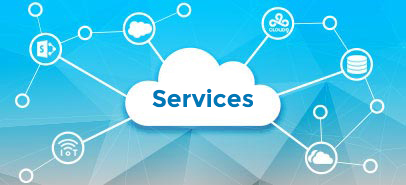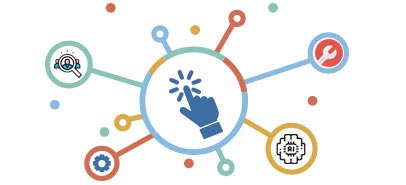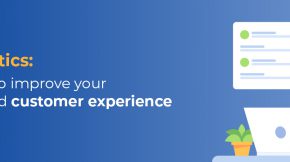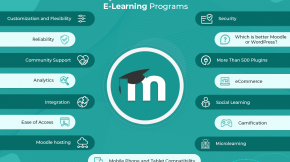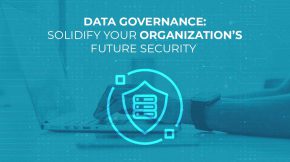Harnessing the Power of Data in eLearning: A Guide to LMS Reporting and Analytics
Clear information helps people make good decisions, especially in learning and development. LMS Reporting and Analytics are at the center of this process. They show what is happening in your learning management system. With the right approach, data from your courses can be turned into knowledge that helps everyone involved – admins, teachers, managers, and learners.
Why LMS Reporting and Analytics Matter in 2025
Learning is more than sharing course material. Teams want to see if their training programs work. LMS Reporting and Analytics help everyone know if learners are active, if they finish courses, and how they perform. This is about understanding what works and what does not. When you track things like learner progress, course completion rates, and assessment scores, you know where to help learners and how to improve the learning experience.
Many organizations use LMS Reporting and Analytics to improve training initiatives. These analytics show who is engaged, who is at risk, and where changes are needed. Good data gives confidence in decisions.
Types of Analytics in a Learning Management System
There are four main types of analytics. Each one answers a different question:
- Descriptive analytics: What happened? These reports show numbers – enrollments, course progress, attendance report, and activity logs.
- Diagnostic analytics: Why did it happen? These look for patterns and reasons. For example, if many people leave a course at the same point, diagnostic analytics can help you find out why.
- Predictive analytics: What could happen next? This uses learning patterns and past data to find learners who might drop out or fall behind.
- Prescriptive analytics: What should be done? Here, the system suggests actions, like sending reminders for overdue training or offering extra resources to at-risk users.
LMS Reporting and Analytics use all four types. Together, they give a full picture of your learning and development programs.
What Makes Moodle’s LMS Reporting and Analytics Stand Out
Moodle is known for its flexibility. Its LMS Reporting and Analytics engine is powerful, letting you track almost anything happening in your courses. Course reports in Moodle show user engagement, activity logs, and completion data. The gradebook report is detailed, letting you export grades, see trends, and build custom reports.
Moodle also includes predictive analytics. It can use learning analytics to spot learners at risk, suggest interventions, and track engagement over time. With plugins, you can add even more reporting capabilities. Custom reports, ad-hoc database queries, and integration with BI tools like Power BI make it easy to get the relevant data you need.
Building dashboards or setting up reporting tools for resource utilization, certification tracking, or cohort progress is simple in Moodle. These tools help you keep track of everything, from compliance certificates to dropout rates.
Core Metrics in LMS Reporting and Analytics
You need to know what to measure. Here are key metrics used in LMS Reporting and Analytics:
- User engagement: Who logs in, how often, and what do they do?
- Course completion rates: How many learners finish the training programs?
- Assessment scores: What are the grades, and are there skills gaps?
- Learner progress: How far have people gone in their learning paths?
- Drop-off points: Where do learners stop or lose interest?
- Resource usage: Which learning resources or materials get used most?
- Certification tracking and compliance: Are people earning their compliance certificates?
Tracking these metrics lets you see if your learning management system is supporting your goals.
Turning Data into Action
Collecting data is only the start. LMS Reporting and Analytics help you move from raw numbers to useful insights. For example, if the gradebook report shows low scores in one module, you can review the assessment activities or training materials. Analytics can show if a certain group (cohort) is struggling, or if user engagement drops after a certain lesson.
Reports can be scheduled or even auto-generated LMS reporting can send updates to managers. This is important for mandatory training, where tracking overdue training and progress is key.
If you use custom reports and dashboards, you can make sure each group – admins, teachers, managers – sees the most relevant data for their work.
Real-World Examples of LMS Reporting and Analytics in Use
In higher education, LMS Reporting and Analytics help track attendance, measure course progress, and check if learning outcomes are met. Academic institutions use these tools to find students who might need extra support and to make sure everyone meets requirements.
In business, HR and L&D teams use LMS Reporting and Analytics to monitor training initiatives, see who finished onboarding, and where skills gaps exist. Reports on user enrollment activities, assessment engine results, and learning paths help improve business impact.
For organizations that want to design or improve their Moodle reporting setup, custom dashboards and analytics can be built for specific needs.
Advanced Analytics in Moodle: Using AI and Predictive Models
Moodle’s LMS Reporting and Analytics use machine learning and predictive analytics to help organizations act before problems grow. For example, if analytics show a risk of high dropout rates, admins can reach out with extra support. AI models in Moodle can be fine-tuned for your organization, so you get relevant data that matches your goals.
Expert consulting can help you set up these systems and make sure you get the most from your LMS analytics.
Building Dashboards for Different Roles
Not everyone needs the same reports. LMS Reporting and Analytics let you give each person the information they need. Teachers see gradebook reports and learning progress. Admins check system health, compliance, and resource utilization. Managers look for business KPIs, training program effectiveness, and reporting on team learner engagement.
Custom dashboards can be set up to show the right LMS reports to the right person. This helps everyone stay informed.
Try a Moodle demo to see how different dashboards can be tailored for different teams.
Data Privacy and Compliance
LMS Reporting and Analytics involve sensitive information. Moodle respects privacy by using roles and permissions. Only those with the right access see certain data. The platform supports GDPR and other requirements, so learner data is handled responsibly.
Automated backups, audit trails, and secure storage are part of a well-run reporting library. It’s important to review privacy settings and have clear policies for using and storing data.
Ongoing support and cloud deployment help keep your data protected and your reports running smoothly.
Best Practices for Using LMS Reporting and Analytics
To get the most from your LMS Reporting and Analytics:
- Check completion and activity reports often to spot trends.
- Use custom reports for specific groups or needs.
- Make use of scheduling reports and auto-generated LMS reporting.
- Combine analytics with feedback from learners – surveys, ratings, comments – to get a full view.
- Keep dashboards simple so everyone can find what matters.
- Work with Moodle developers if you need more advanced features.
- Review privacy and compliance settings regularly.
Clarity in reporting setup and frequent reviews ensure that your LMS Reporting and Analytics continue to meet your needs.
Frequently Asked Questions
What are the four types of analytics capability? Descriptive, diagnostic, predictive, and prescriptive analytics. Each provides a different view: what happened, why it happened, what might happen, and what to do next.
What are the key differences between reporting and analytics? Reporting shows you the facts – numbers and basic results. Analytics explain trends and suggest actions based on those facts.
How can LMS Reporting and Analytics in Moodle help my training programs? You can track learner progress, spot people who need help, see which training materials are effective, and make sure compliance requirements are met.
Which LMS Reporting Features Are Most Valuable? Course completion rates, attendance reports, gradebook reports, resource utilization, and cohort progress tracking.
How do I use custom reports in Moodle? Through plugins and queries. These let you pull out specific data, build dashboards, and create reports for your needs.
What about privacy in LMS Reporting and Analytics? Moodle uses roles and permissions. Only the right people see the right data. It supports GDPR and other rules to protect learner information.
How often should I check LMS reports? Check regularly – t least monthly. For compliance or mandatory training, monitor more often.
What’s the benefit of combining analytics with feedback? You get both numbers and opinions. This helps you see not only what’s happening, but also why.
LMS Reporting and Analytics are essential for anyone using Moodle or another learning management system to run training programs. By tracking the right metrics and using data to guide decisions, you can improve learning outcomes, support learners, and meet business needs. Careful use of reports and analytics makes your entire learning and development program stronger.
If you need help with custom report building, advanced analytics, or ongoing support, there are many ways to adjust your Moodle system to fit your needs.


